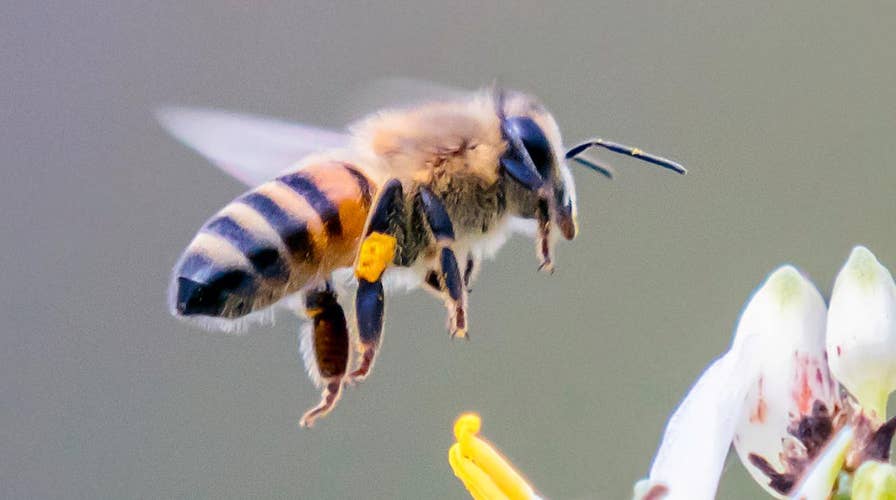Bees can solve math problems the average toddler can't
According to a new study, researchers have found that Honey Bees are able to understand simple addition and subtraction, at levels that would give the average 4-year old difficulty.
If you're struggling with a simple math problem, it might be better to ask a bee than a mathematician.
According to a new study, researchers have found that the buzzing insects are able to understand simple addition and subtraction, at levels that would give the average 4-year old difficulty.
"We show that honeybees, with a miniature brain, can learn to use blue and yellow as symbolic representations for addition or subtraction," the study's abstract reads. "In a free-flying environment, individual bees used this information to solve unfamiliar problems involving adding or subtracting one element from a group of elements."
NEW INSECT DISCOVERED IN CANADA MAY BE SURVIVOR FROM THE LAST ICE AGE
The study has been published in Science Advances.
Fourteen honeybees were collected by the researchers for the study, who then had them enter a maze where they would see between one and five shapes that were either blue or yellow in color.
From there, the bees were given the choice to fly left or right and complete a simple task – if the shapes were blue, they had to add an element; conversely, if they were yellow, they needed to subtract. They were rewarded with water containing sucrose (sugar) and punished with water containing quinine (which has a bitter flavor) depending upon the outcome.
The bees were trained for 4 to 7 hours, LiveScience reported, and then the challenge was repeated to see if the bees had retained any of the information. In doing the tests, the bees chose correctly between 60 and 75 percent of the time, the news outlet reported.
"This display of numerosity requires bees to acquire long-term rules and use short-term working memory," the abstract added. "Given that honeybees and humans are separated by over 400 million years of evolution, our findings suggest that advanced numerical cognition may be more accessible to nonhuman animals than previously suspected."
One of the study's authors, Adrian Dyer, said the bees doing simple math may be the result of evolution and having gained the ability to understand the information around them, as they go from flower to flower. It's also possible they have gained additional "neuroplasticity," or new connections among the neurons in their brains.
Insects have less than 1 million neurons, while the average human has approximately 86 billion neurons, LiveScience added.
The next step is to see whether bees can perform additional, more complex equations, or even adding a third input to the equation.

